In the days after the event, many comments popped up in the media but what is interesting is that the media (especially the Western one) already started to point fingers at Russia without even properly assessing the event and poorly based on the embedded narratives against one side. Fortunately, that is not the way how any serious analyst will approach the subject. It is too early for a detailed forensic analysis but some parameters can be used as a base.
The intention of this article is to put some light on the technical possibilities of the Kakhovka Dam destruction from the perspectives of engineering and military applications. It is not into the forensic investigation or the technicalities involving calculations and mechanical and structural analysis but an attempt to explain the situation with ordinary language to be understandable by readers with no previous technical background. As that, it can be used as a base for the investigation teams.
In the Kakhovka dam collapse, there is no one single reason, rather a combination of events caused by a human factors. The chain of events is logical from the engineering viewpoint. The start was extensive shelling by one side causing damage to the dam structure and the regulating components such as sluice gates. The next is a water hydrostatic pressure buildup and wave-induced vibrations of the moving mass of water and impact on the likely disabled regulating devices. Carefully calculated discharge of the large water mass upstream corresponds with at first glance unrelated events on the battlefield (startup of the counteroffensive) further supporting the chain of events theory.
Background
The Kakhovka dam and hydroelectric power plant is a part of the Kakhovka Reservoir which is the last dam in a cascade consisting of 6 dams and reservoirs on the Dnieper River.
The cascade consists of:
Kiev (Vyshgorod);
Kanevskaya (Kanevskaya);
Kremenchug (Svetlovodsk);
Sredneprovskaya (Kamenskoe);
Dnieper (Zaporozhye);
Kakhovskaya (Nova Kakhovka).
The dam was finished in 1956 when the Kakhovka Hydroelectric Power Plant was built at Nova Kakhovka. In the years after WWII, the Soviet Union invested in the repair of the dams damaged and destroyed either by Germans or the retreating Red Army during 1941/42 as well as building new dams and reservoirs. During the design and construction period, significant improvements were implemented. Soviets in general put a little bit higher safety factor than the Western counterparts creating the construction resistant to either natural disturbances such as earthquakes or immerse flooding and also taking into consideration WWII experience, especially in the ways of immobilizing and destructing in the case of the occupation. In general, Soviet designs were not typically aesthetically pleasing judging from Western standards but were more robust, more rigid, and resilient.
Immediately after the beginning of the Special Military Operation, the Russian military was able to secure both river flanks including bridges and dam. What happened next is when the Ukrainians received Western weapons – among them 155 mm guided artillery shells Excalibur and HIMARS MLRS, Ukrainian forces started shelling the bridge and dam.
Taking into consideration the vulnerability of the Russian troops in the western areas and the danger that the supply routes over the Dnieper may be cut off (with the destruction of the bridge and dam), Russian general Surovikin ordered a retreat to the eastern side. During this retreat, Ukrainian troops attempted to attack retreating forces but suffering much higher casualties than the retreating Russians. In the media it was celebrated as a victory but in reality that was nothing short of a pyrrhic propaganda victory. The Kakhovka dam stayed virtually divided between the two sides with the frontline going just across the dam. This put a great risk because of the constant shelling (predominantly by the Ukrainian military).
The photographs of the dam of the Kakhovskaya power plant show that one of the dam's sluices was actively leaking water.
Investigative journalist Christian Tribert, posted on his Twitter page satellite images of the Kakhovka dam, which were taken on May 28. According to these images, the lock of the dam was already showing water flow at that time, and a more recent image from June 5 showed an increase in this flow.
Triebert suggested, based on these photographs, that the dam may have been damaged at least a week before the official confirmation of its failure.
On 6 June 2023, the dam was destroyed, and simultaneously Ukraine and Western allies started blaming Russia for that. As of the time of writing, the debate is still ongoing, and no doubts there will be many new theories. In some of these theories, Russia is accused of mining the dam and blowing the gates. Some so-called intelligence reports started to pop. Russia blames the Ukrainian side, and the material evidence such as video clips of the Ukrainian artillery shelling the dam are shown. Statements by high-ranking Ukrainian officials about the plans to destroy the dam were also shown. In any case, after this special military operation is finished, or the war as how is called in the Western media, we can expect a detailed analysis. For now, what we have are the result of the destruction, the events prior to that, and the motives which are related to the gains or losses of what each side can gain and lose.
Typical dam design
Speaking of the dam components and design it is better to have a graphic presentation so the reader can understand the terminology:
1. reservoir, head race; 2. dam; 3. dam crest; 4. spillway; 5. power station; 6. turbine tail-race tunnel; 7. sub-station; 8. stilling basin; 9. radial gate; 10. intake; 11. penstock; 12. turbine; 13. generator; 14. generator transformers; 15. overhead bus-bars; 16. circuit breakers; 17&24. roller dam (weir); 18. lifted roller; 19. side-plate; 20. submerged roller; 21. geared (toothed) rack; 22. niche, recess; 23. winch cabin; 24. service bridge; 25&32 sluice dam (weir); 25. hoisting gear bridge; 26. winding gear; 27. guide groove; 28. balance weight, counterweight, counterpoise; 29&30 sluice (gate); 30. stiffening (reinforcing) rib; 31. dam (weir) sill; 32. side (wing) wall, abutment.
The composition of the Kakhovskaya dam and hydropower plant includes:
earthen bottom of the dam with concrete structures;
drainage dam (with 28 spillways);
hydroelectric building;
an earthen dam between the gate and the hydroelectric plant;
navigation gateway;
two earth floodplain dams.
According to Russian sources, the upper part of the Kakhovskaya hydroelectric power station was destroyed as a result of the shelling by the Armed Forces of Ukraine, but the dam itself survived. This was announced on June 6 by the mayor of Nova Kakhovka Vladimir Leontiev. As a result of partial damage to the plant, the water level downstream rose several meters. The International Atomic Energy Agency (IAEA) said they were monitoring the situation at the Zaporizhya Nuclear Power Plant and there is no threat to the safety of it. The plant director Yury Chernichuk noted that the heat removal system for the reactors (6 in total) can be replenished with both water from the Kakhovka reservoir and alternative sources.
According to the Ukrainian and Western media, the dam was mined and blown by the Russians.
In any case, the environmental catastrophe downstream is horrific.
Sluice gates - the road to breach
From the hundreds of photos and videos circulating in the media, it is clearly visible that the top portion consisting of the gates (or to be more precise sluice gates) which regulate the flow and overflow are gone. It is worth now addressing the role of these gates and the technology behind them. Destruction of these gates is something visible and quite dramatic with the water flowing over. What is not visible (for now) is the level of damage that is beneath them. To analyze that, the first thing is that the water level shall drop. Judging by the design of this particular dam, these underwater parts include very thick reinforced or prestressed concrete so the best assumption will be that the base is more or less intact.
The main operational requirements for gates and valves are the control of floods, water-tightness, minimum hoist capacity, convenience of installation and maintenance and above all failure free performance and avoidance of safety hazards to the operating staff and the public. Despite robust design and precautions, faults can occur and the works must be capable of tolerating these faults without unacceptable consequences.
Gates may be classified as follows:
position in the dam – crest gates and high-head (submerged) gates and valves;
function – service, bulkhead (maintenance) and emergency gates;
material – gates made of steel, aluminium alloys, reinforced concrete, wood, rubber, nylon and other synthetic materials;
pressure transmission – to piers or abutments, to the gate sill, to the sill and piers;
mode of operation – regulating and non-regulating gates and valves;
type of motion – translatory, rotary, rolling, floating gates, gates moving along or across the flow;
moving mechanisms – gates powered electrically, mechanically, hydraulically, automatically by water pressure or by hand.
Obviously, in this type of dam, only a few types are involved.
Without getting into the particular blueprints and based on the visual observation, we can assume that the sluice gates at this dam are the regulating one, crest type, service, steel, and concrete with the translatory motion powered electro-hydraulically by gentry crane. The very basic function of the sluice gate is shown in the following pictures:
The movement and forces in this type of sluice gates are very complex and definitely out of the scope of this short article. For the illustration purpose, what happens with the flow is shown here:
Damaging the gates
In the normal operation modes, forces action on the sluice gates is known, however, the Kakhovka dam was exposed to intense shelling by the Ukrainian forces which put the new variables into the equations.
According to reports and evidence, the dam was attacked multiple times. The chronology of the attacks can be found here:
https://twitter.com/MyLordBebo/status/1666575735891296257
Ukrainian shelling of the top of the dam has consequence that likely the sluice gate and guides were damaged. The impact of the heavy 155 mm shells or the HIMARS warheads in the proximity of these mechanisms can definitely cause different levels of damage. The most likely damage is that the sluice gate may be stuck in the current position and the gentry cranes were not able to do any manipulations.
To repair this kind of damage is complex and to perform that in the middle of the war zone is an almost impossible task because of the constant fire.
As guided 155 mm Excalibur shells and HIMARS rockets have high precision, they can be also used to create a “near miss effect” meaning they can be set to explode upon penetration into the water right beside the sluice gates. This means that underwater explosions can affect the gates. Even after the breach, Ukrainian side performed additional shelling.
Underwater explosion
Let’s now discuss the phenomena of underwater explosion:
The physical picture of an explosion of a high explosive charge in water is qualitatively similar to an explosion in the air. However, since water has low compressibility and is a denser medium than air, the numerical values of the explosion parameters differ from the same parameters in air. At the moment when the shell explodes underwater, a detonation wave approaches the boundaries of the charge, a strong shock of the explosion products onto water occurs, and a shock wave develops in it. The density of water at the shockwave front increases at most by a factor of 1.5. As the shock wave propagates in water, all its parameters rapidly decrease. because of this, to achieve the desired effect, the shell needs to explode very closely to the designated target. Irreversible losses during an explosion in water are small, and the energy of the explosion transferred to the shock wave is spent mainly on mechanical work associated with the involvement in the motion of the mass of water, through which the shock wave passes.
The main factors determining the destructive effect of an explosion of a charge in water are shock wave (primary and secondary), hydro flow (created by the movement of the mass of water displaced by the gas bubble and moving behind the shock wave front), an explosion product of the gas bubble (in the case when the target is at a distance). At present, there are no theoretical methods to estimate the destructive effect of the explosion of the explosive charge in water. Since up to 50–60% of the explosion energy is concentrated in the main shock wave, the calculation of the effect of an underwater explosion is commonly limited to the evaluation of the shock wave action. It is assumed that the more intense the main shock wave is, the stronger will be the effect of other associated damaging factors (secondary wave, water flow, explosion products), all other things being equal.
Logically, a larger quantity of the explosive will create a stronger shock wave. The question is how to deliver the large quantity to explode right beside the sluice gate or at the bottom of the dam. The effect of Dambusters Raid in 1943 is an excellent example of how a large bomb placed by the dam can cause physical damage that will lead to structural failure using the effect of the accumulated water. There is no difference here, just the methods of delivering the required quantities are different. An aerial bomb is out of the question so the explosive can be delivered by unmanned vessels. Nowadays Ukraine is using them to attack far from their shores so application in the Dnieper River is not unreasonable. The question is will they do that? On the night of dam destruction, no large explosion (corresponding to 300+ kg of high explosive) is reported publicly. It is worth saying now that in some of the previous attacks (as a probability) a vessel or a rocket with 300+ kg of high explosive either on the surface or slightly beneath will definitely derail the heavy steel gate, punch out of the side rail and bend it. No repair can be performed on-site and that gate is permanently out of service.
We can now with certainty say that the explosives either due to shelling or placing are not the major reason for the dam breach, but rather one of the contributors. Saying this, what may be the main reason? It is now pointing to the shear force of nature - meaning the huge masses of the fast-moving water, the rapid increase in the hydrostatic pressure, and the induced vibrations.
The force of nature
We can now dissect the previously mentioned:
"Still water runs deep" and "Fast water cut the canyon" are two quotes that we can start with.
The mass of water in the Kakhovskaya Reservoir is enormous. We are talking about millions upon millions of cubic meters. This water is a very flowing mass. The dam is her obstacle and the sluice gates regulate the flow. If these sluice gates are incapacitated ore or another way, or just a portion of them and combined with fast-moving large quantities of the water mass, the force of nature will do the thing - highly likely the obstacle will be swept away.
In river hydraulics, there is a way to make large water masses move faster. The solution in the Dnieper Cascade is the dam in Zaporozhe. The one that controls the dam can close all gates and let the reservoir slowly fill up to the maximum safe level. There is no lack of water upstream. In a coordinated move, taking calculations and hydrodynamics, opening all available gates will make hundreds of thousand cubic meters of water start to move, firstly slow then accelerate as the mass is added. This mass follows the river bed and it will slam into the next obstacle - the Kakhovka dam. If the regulator gates are not functional the water mass will impact the dam creating enormous static pressure but also the waves will be formed adding additional stress in the form of induced vibrations.
To illustrate these phenomena the following graphics are used:
The impact processes of two overtopping waves are shown in the picture above. Stage (a–c) indicates the impact process of the individual overtopping wave (in gray color). Stage (c–e) shows the interaction between the initial reflected overtopping wave (in grey color) and the following incident overtopping wave (in white color). In Stage (d–d), the piling-up of the following incident wave on the top of the reflected wave can result in a violent impact on a high vertical position on the wall. In Figure 3b, the schematic sketch of the time series signal of an overtopping wave impact including Stage (a–c) is illustrated with a marked dynamic impact peak in Stage (a–a) and the maximum quasi-static force peaks in Stage (b–b) or (c–c). During the initial impact Stage (a–a), the overtopping wave front changes its direction suddenly and results in a sharp dynamic impact peak with a large magnitude and short duration. During the stages of deflection (b–b) or reflection (c–c), the maximum quasi-static force peak is formed with a relative lower magnitude and longer duration, which is governed by gravity. When the maximum quasi-static peak occurs, the instant pressures along the wall are almost linearly distributed.
Consequences
In every investigation, the main question is "Who benefits". In this case, Ukraine can get more because the Russian-controlled side of the river downstream from the dam is a lowland. Russia built field fortifications including trenches, bunkers, and minefields effectively blocking any attempt by anything force large than a section or squad to perform military operations. Flooding the area will effectively neutralize these defense positions and give the Ukrainian side freedom of action, especially special forces, to cross the river.
Flooding cause environmental catastrophes that on a much larger scale affect Russians. Some portion of the Ukrainian-controlled territory is affected but not even close to the size of the Russian portion. The impact on the civilian population is much harder on the Russian side.
Discharge of the water will technically narrow the river upstream the dam so it may be easier to cross. Evacuation of the civilian population requires significant efforts on the Russian side taking valuable transport means from the battlefield. Ukrainian forces downstream may be relieved and sent to the zone of ongoing counteroffensive without fear of any Russian incursion. The propaganda effect, especially aimed at the Western media plays a very important role for the Ukrainian side. Taking aside the authenticity and reality of their claims, for the portion of the Western public, Ukraine is a victim in this case.
Russia doesn't really have a benefit of destroying the dam because it is their civilian population and military downstream that are the most affected. They carefully calculated this event and the consequences and devoted resources to counter it. On the Russian side, it was anticipated that the dam may collapse and that was the major drive to leave previously captured territories on the west bank. General Surovikin's decision to do that, even heavily criticized at the beginning, was strategically sound and reasonable.
One of the biggest issues for the Russian side is the water supply to Crimea. In 2014 Ukraine deprived the peninsula of the water supplies which was re-established again in 2022. Dropping the water level will affect the Crimean water supply canal. For now, reservoirs at the peninsula are filled and supplies collected and time will tell how Russia will deal with that.
The status of the Zaporizhie nuclear power plant is of great importance. Nuclear reactors depend on the water for cooling and depriving it is a recipe for disaster. However, in anticipation of a dam breach as well as the shelling, the reactors are turned off so they require minimum cooling for which the existing cooling water reservoir is more than enough.
The Ukrainian counteroffensive (at the time of writing) is going not really well for the attackers and blowing the dam will definitely not benefit the Russian side. On the other hand, destroying the dam may be a desperate move to deflect attention from the situation on the front.
In any case, the real magnitude of the catastrophe is still to be assessed. That will be possible after the war.
Conclusion
The upper portion of the dam is destroyed. The question is the state of the lower one. For now, we can assume that the bottom portion is intact. Can the dam be repaired? The answer is yes, however, the economic justification will be the major contributor to making the final decision. In any case, nothing will be done until the end of the war.
Further reading:
C. James - Hydraulic Structures, Springer, 2020
P. Novak, A. Moffat, C. Nalluri - Hydraulic Structures, Taylor & Francis, 2007
O. Tielman, Wave Induced Vibrations of Floodgates, Tieleman, 2022
A. Cacoilo - Blast wave propagation in confined spaces and its action on structures, University of Edinburgh, 2019
F. Yazdanoost, J. Attari - Hydraulics of Dams and River Structures, Taylor & Francis, 2004
I. Sochet - Blast Effects - Physical Properties of Shock Waves, Springer, 2018
I. Balagansky, A. Bataev, and I. Bataev - Explosion systems with inert high modulus components _ increasing the efficiency of blast technologies and their applications, Wiley, 2019
C. Needham - Blast Waves, Springer International Publishing, 2018
I. Balagansky – Damaging Effects of Weapons and Ammunition, Willey, 2022
A. Subbotin - Gidrometricheskie Sooruzheniya, Gidrometeoizdat, Leningrad, 1989
X. Chen, S. Jonkman, S. Pasterkamp, T. Suzuki and C. Altomare - Vulnerability of Buildings on Coastal Dikes due to Wave Overtopping, Water MDPI, 2017
M. Grishin - Gidrtehnicheskie Sooruzheniya, Moskva, 1979
Z. Bukurov - Mehanika Fluida, University of Novi Sad, 1989
O. Isaac, O. Alshammari, E. Pickering, S. Clarke and S. Rigby - Blast wave interaction with structures – An overview; International Journal of Protective Structures 2022, Vol. 0(0) 1–47
If you like the article (and much more articles regarding military subjects will come) you can buy me a coffee:
https://www.buymeacoffee.com/mmihajloviW

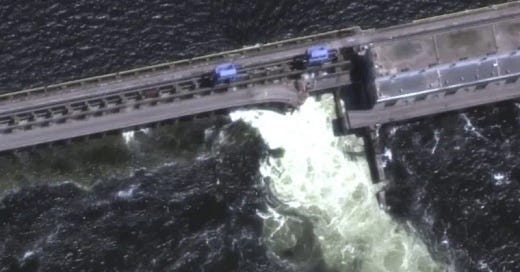


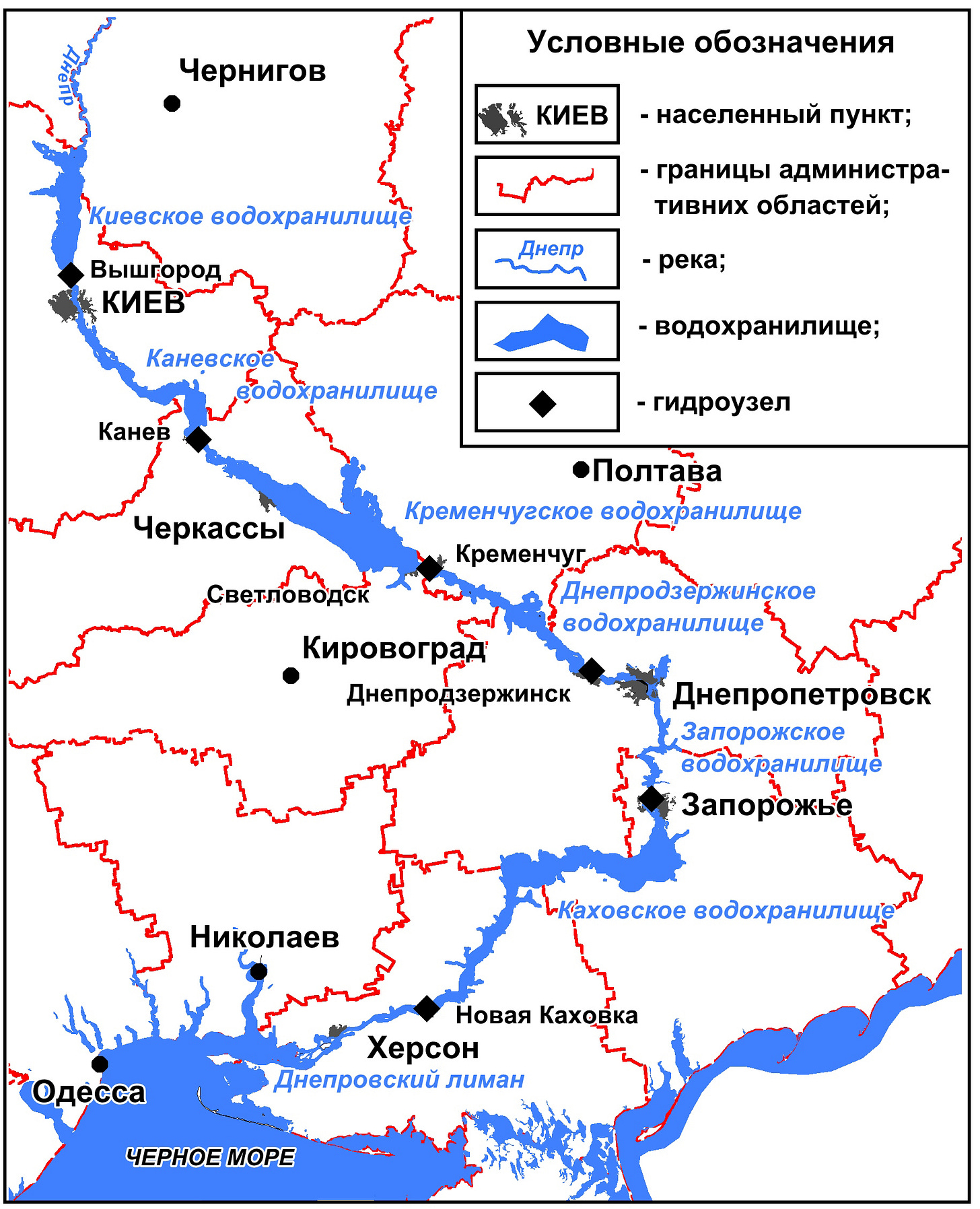

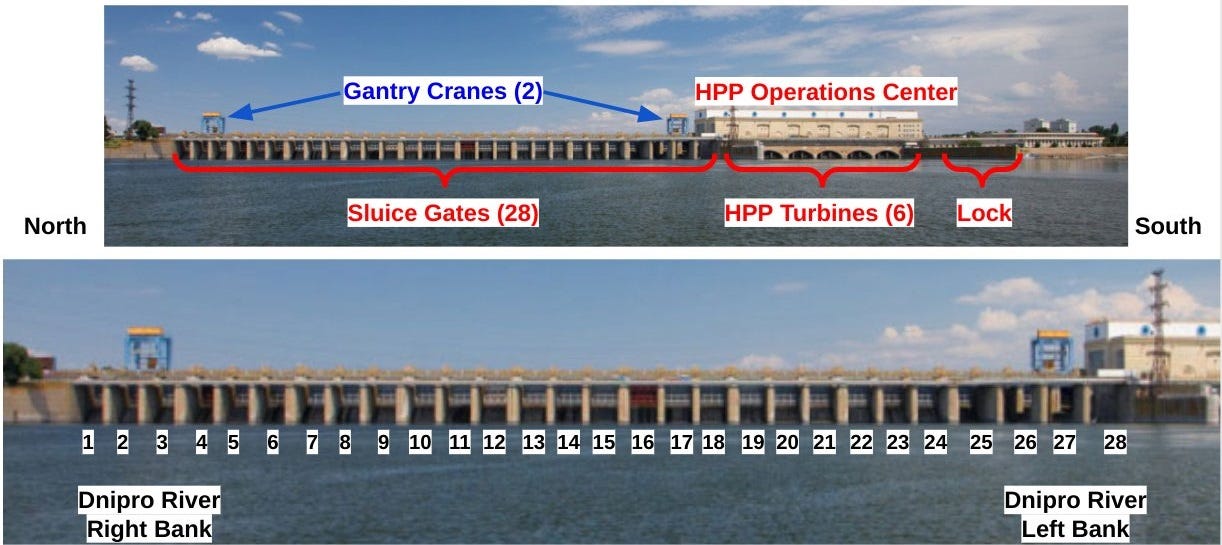
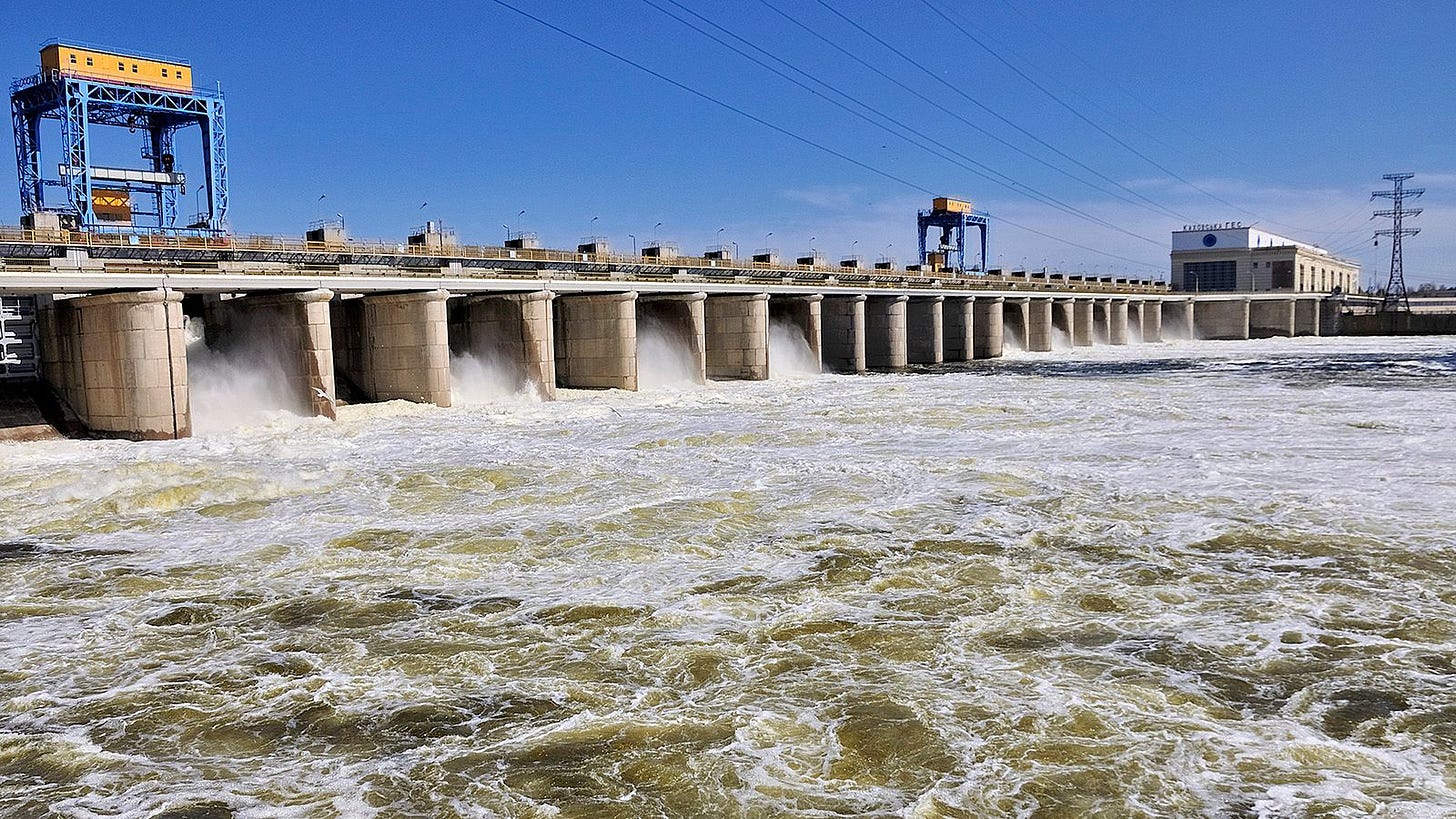
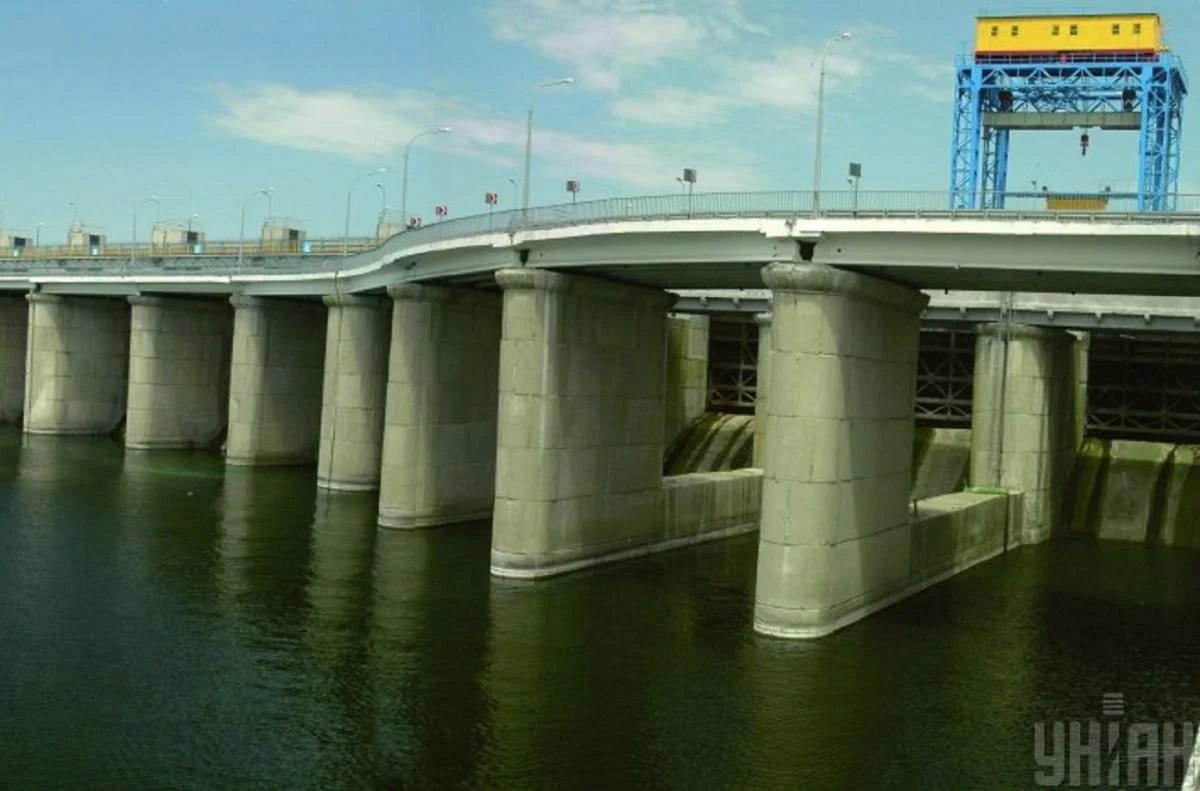

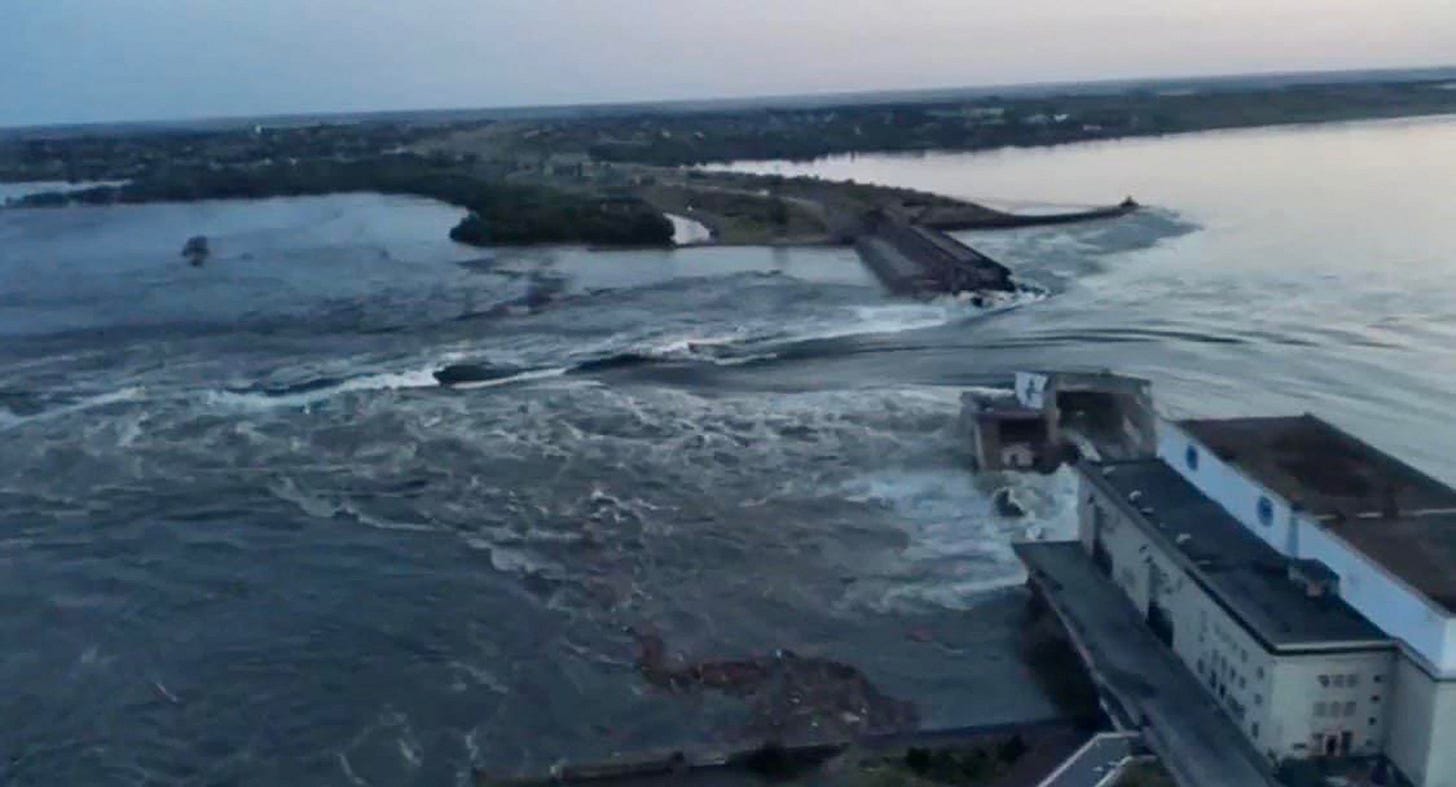
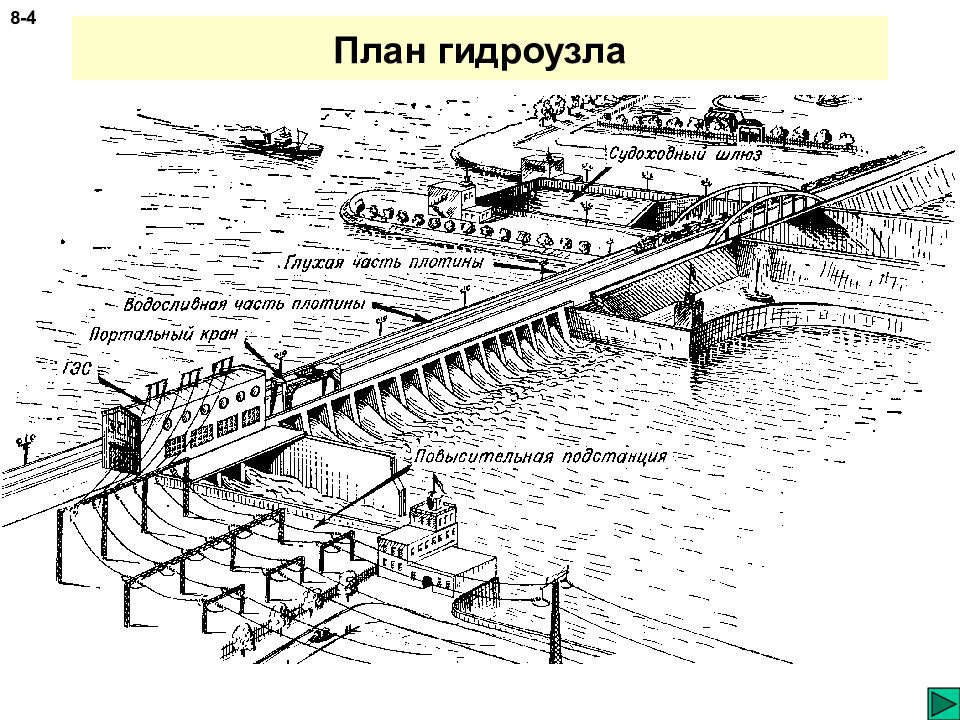
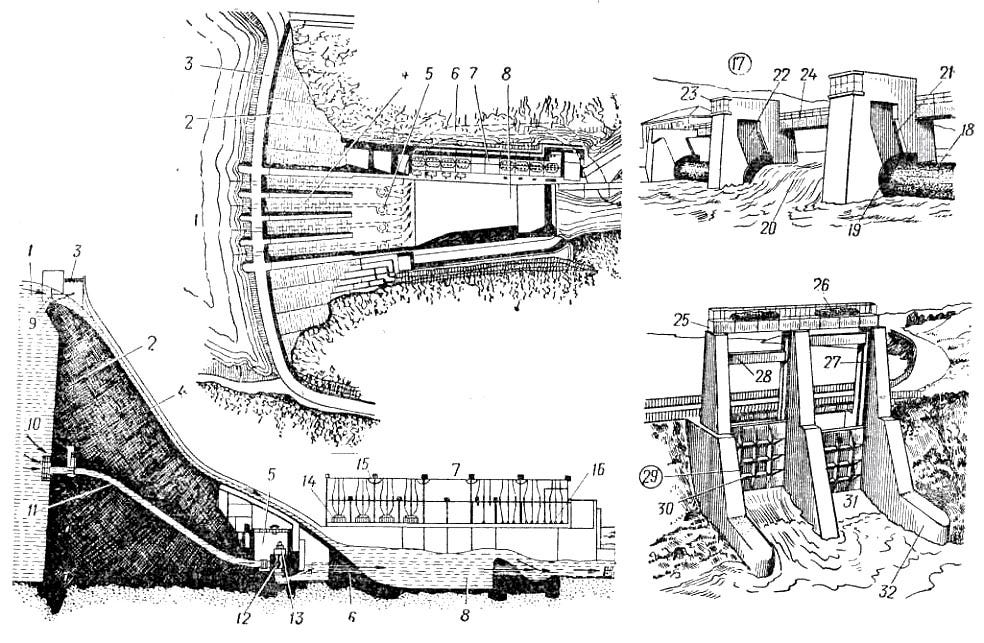
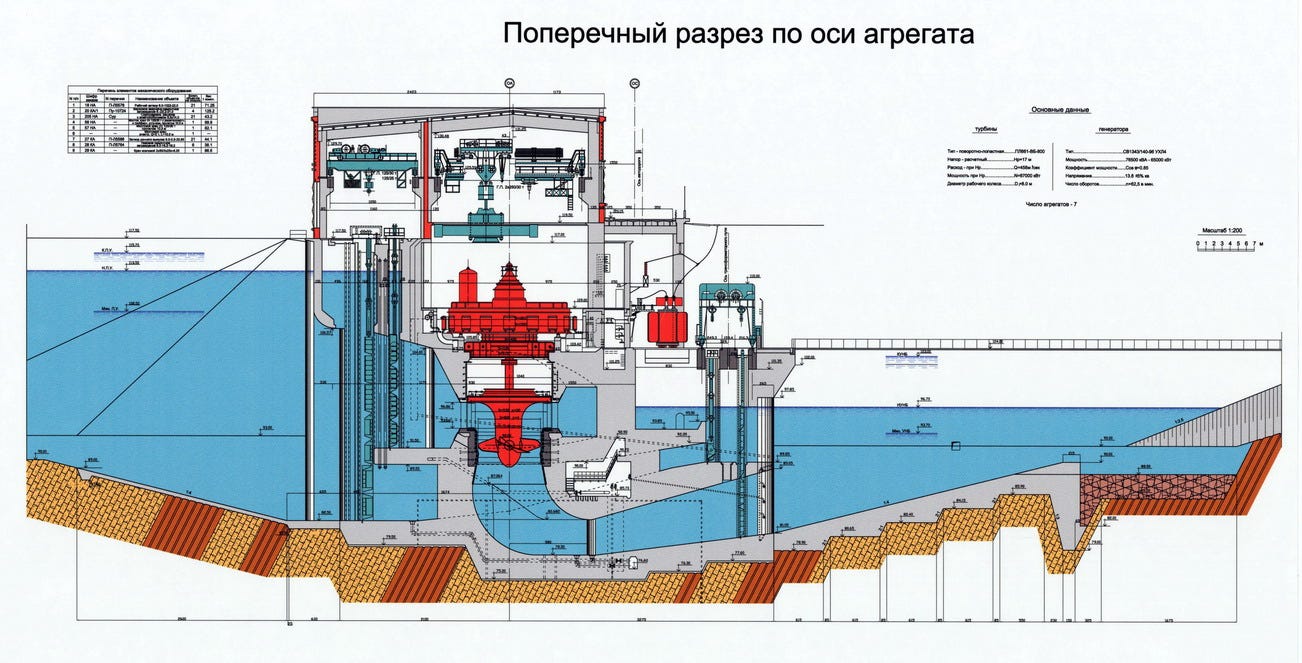

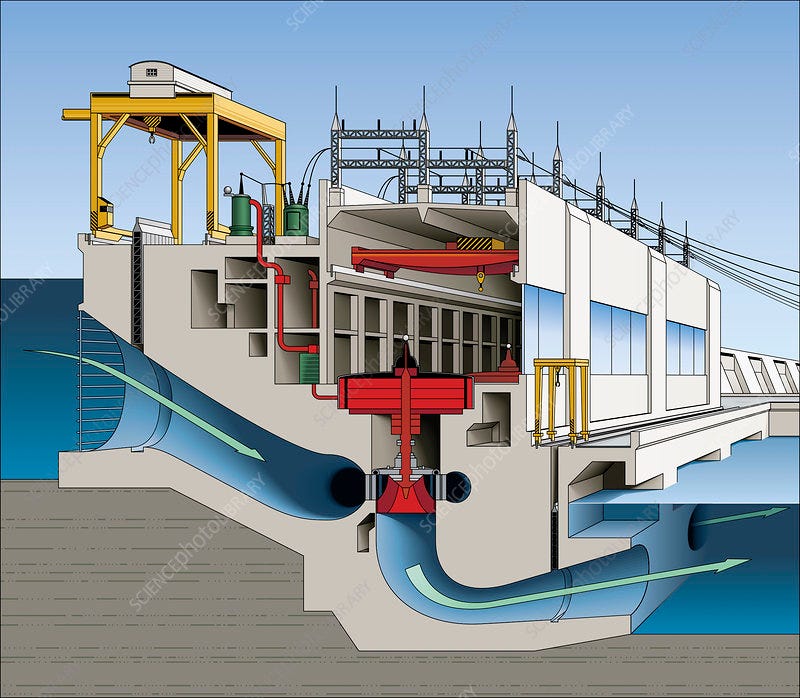

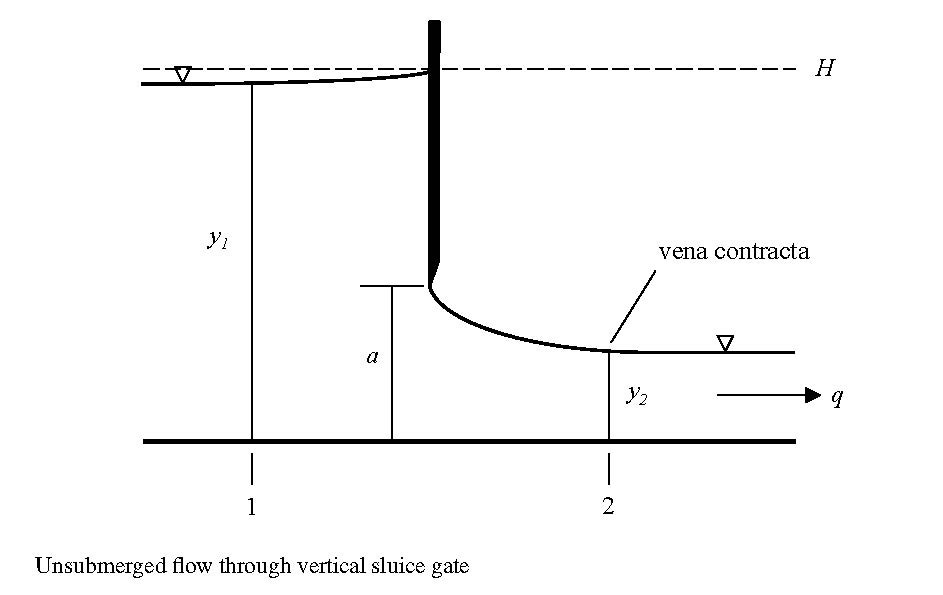

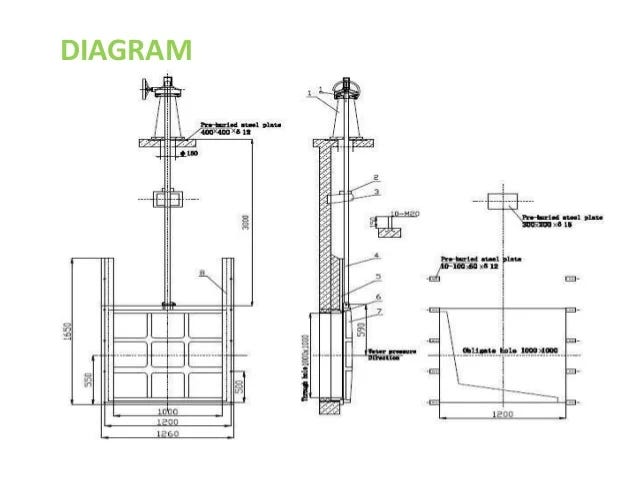
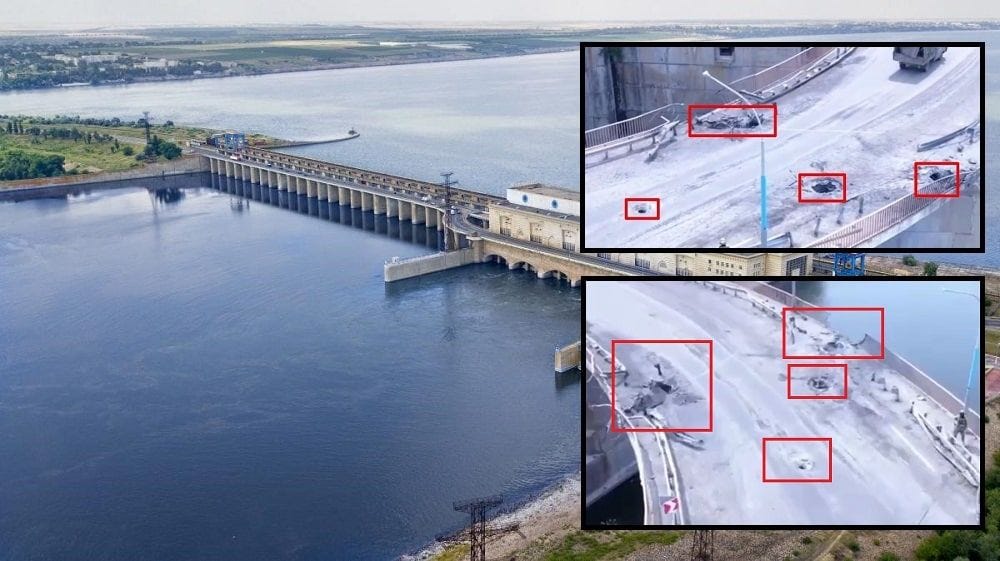
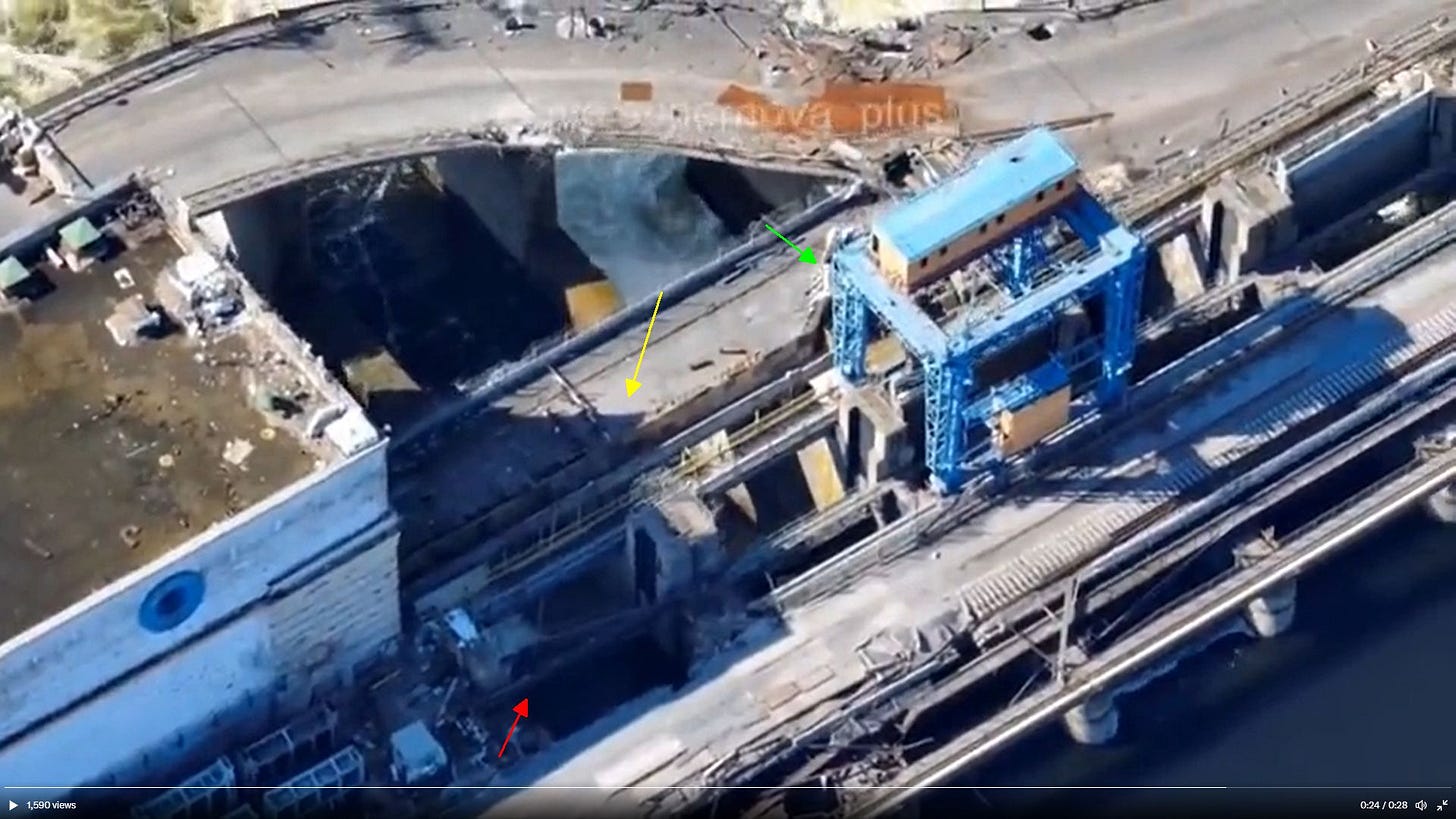
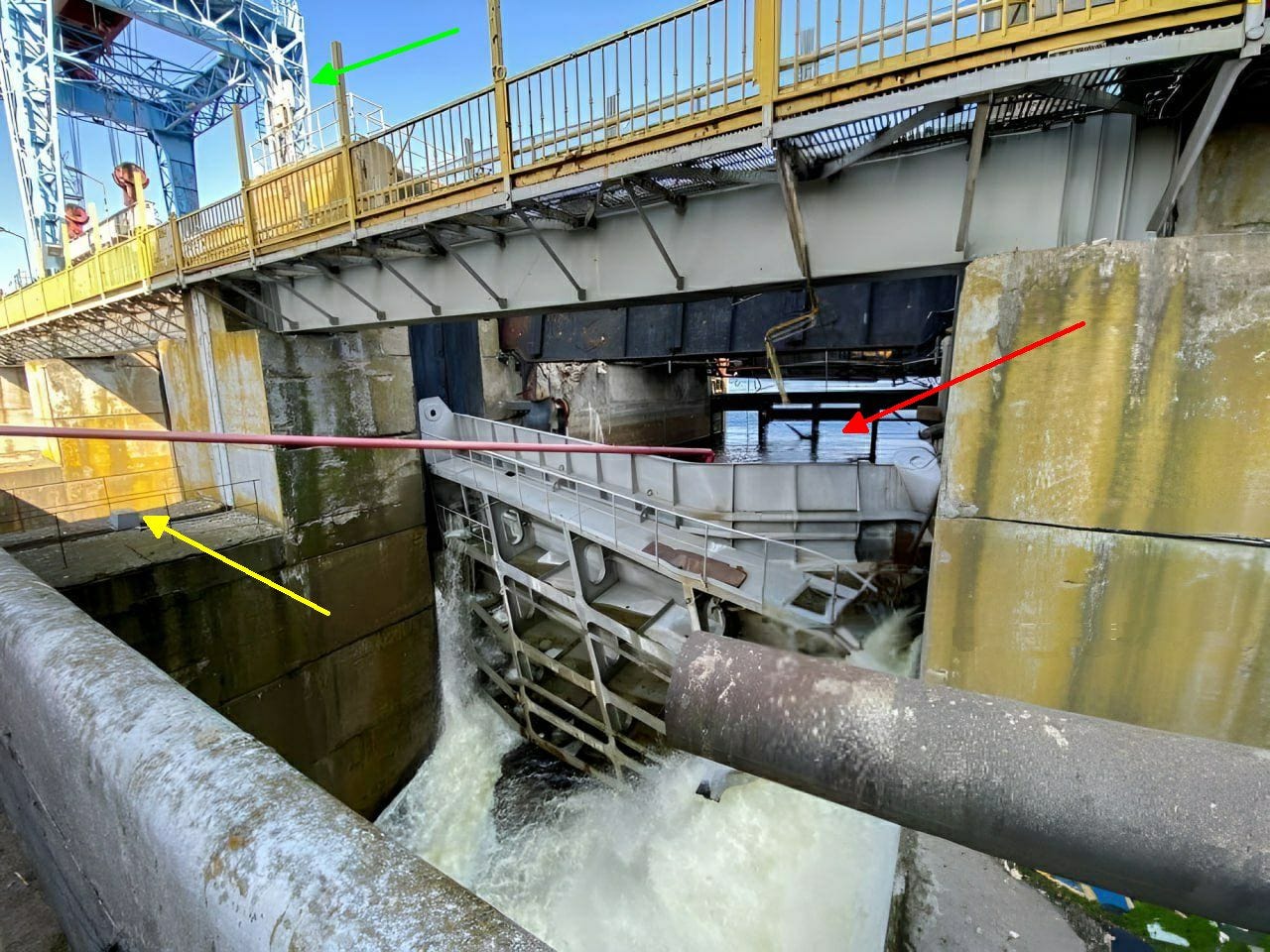
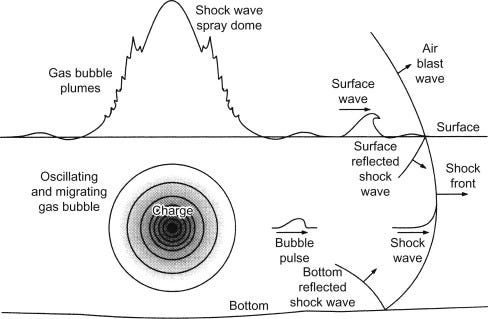
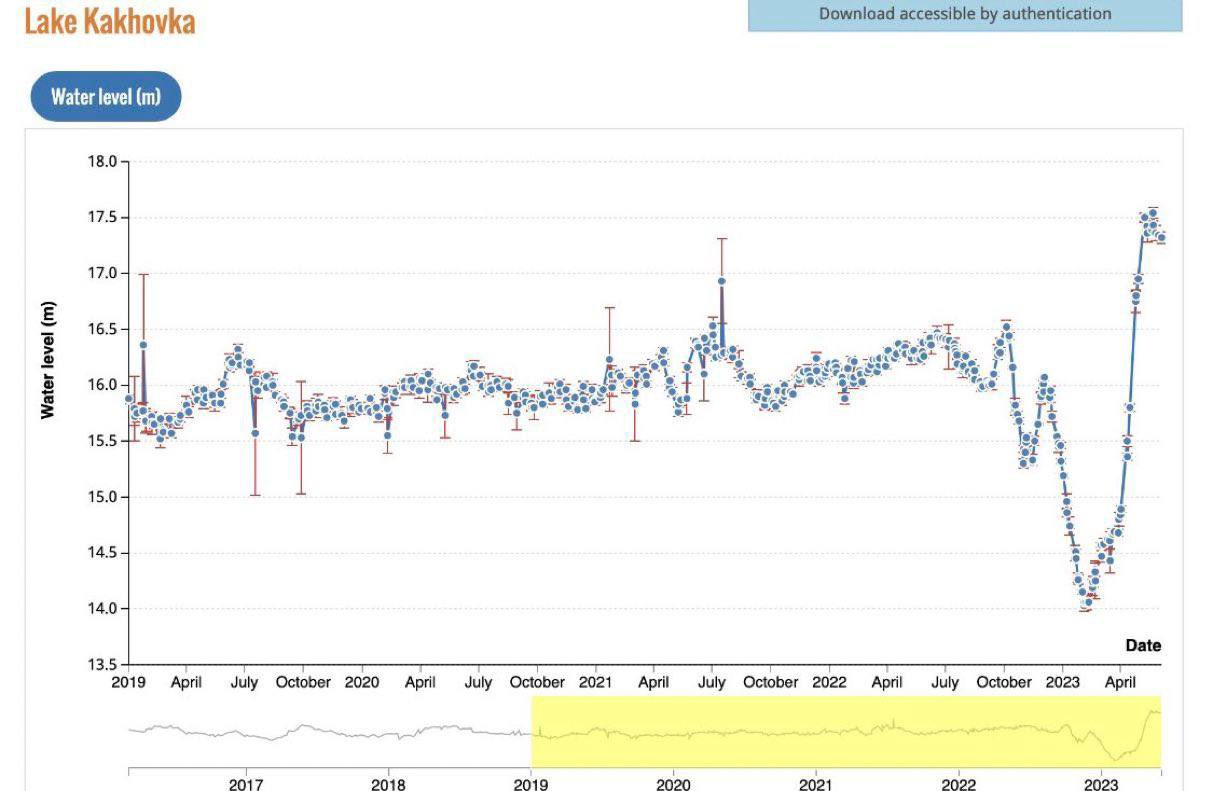

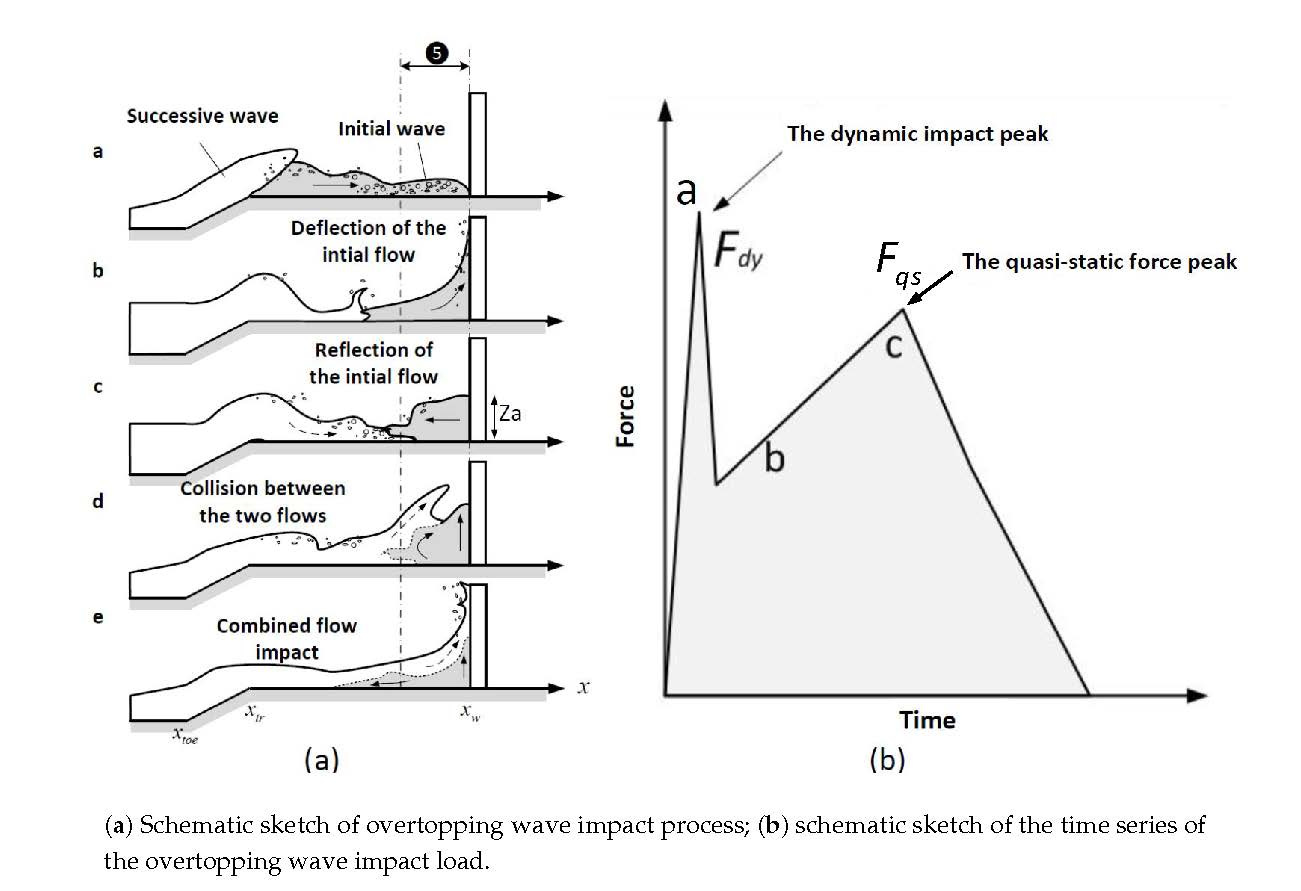
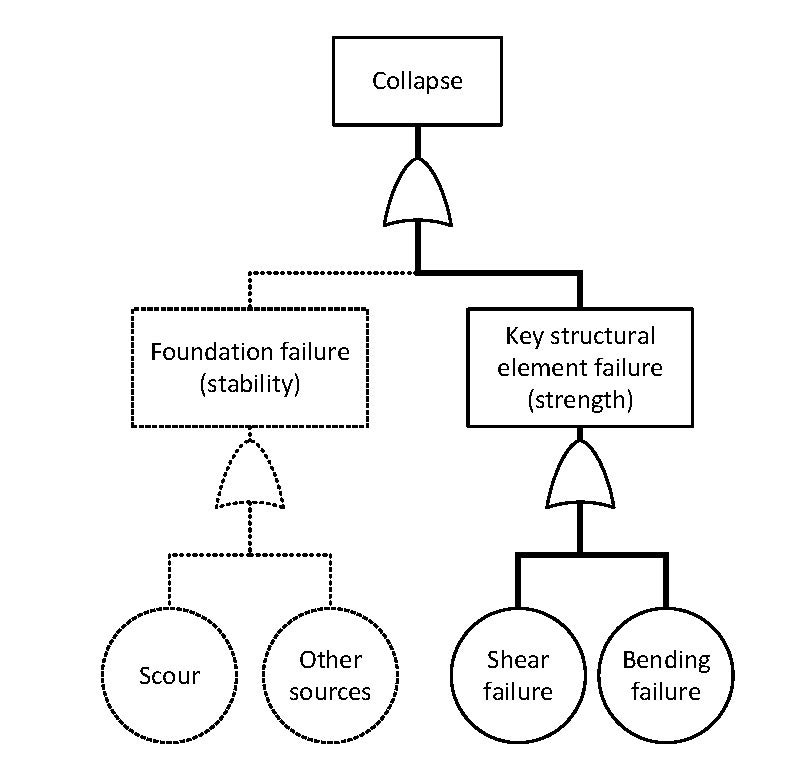
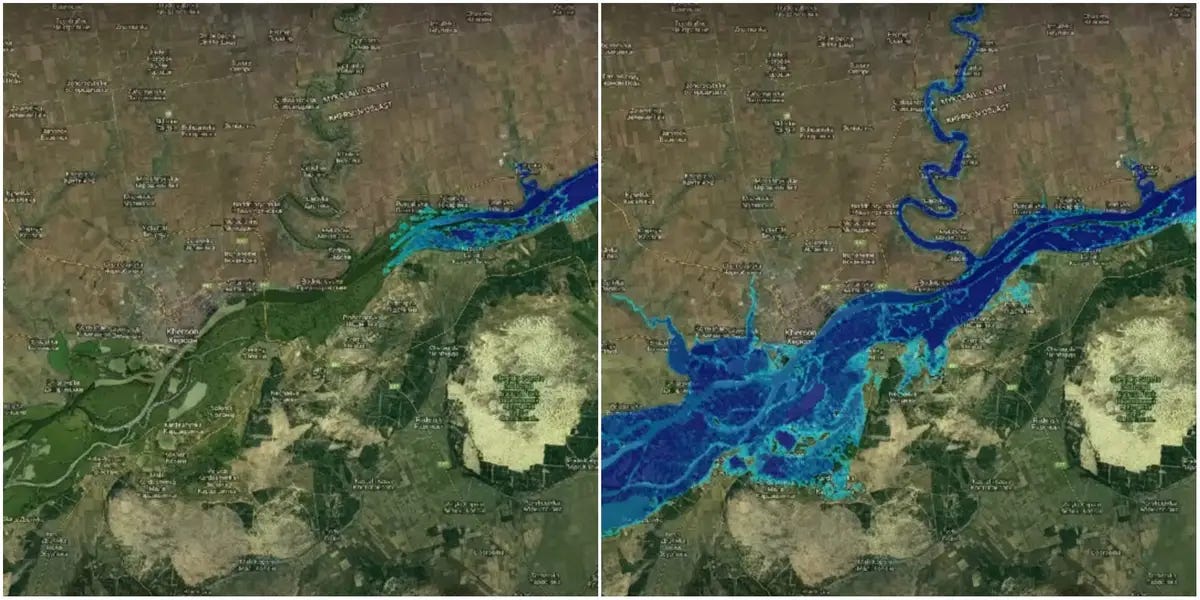
To be fair, Zelenskii could put the footage of him personally planting the explosive that blew the dam on his personal and government YouTube accounts, *and* his passport would be mysteriously discovered amidst the wreckage, and the MSM still would immediately blame Russia.
Extraordinary analysis, thank you, sir. Time will tell how much of the lower dam was destroyed and it will be interesting to see how your analysis holds up once the damage can be fully assessed, but I suspect you are right on point.